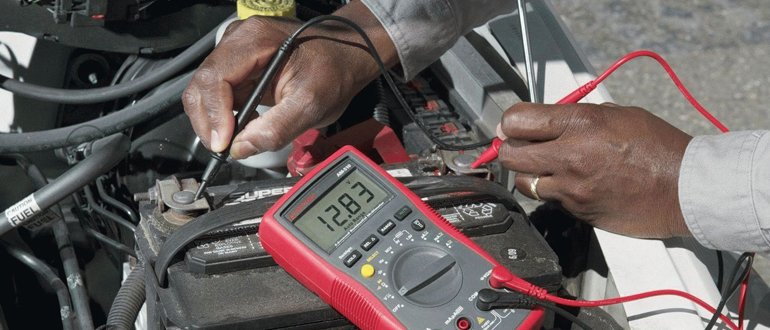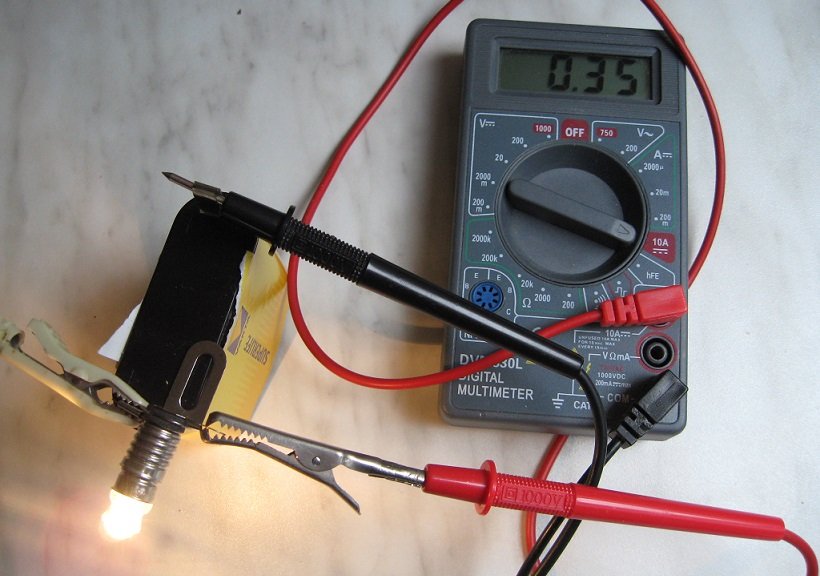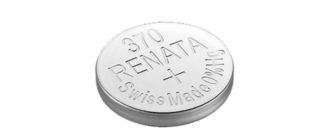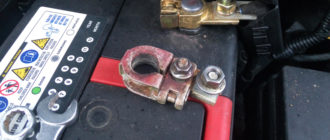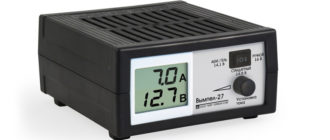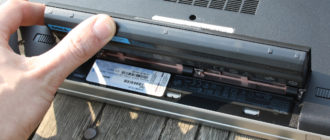A multimeter is a universal device for accurately determining voltage, current or resistance, and not only. Using even inexpensive Chinese models allows you to effectively test any type of battery. This article will describe the main ways to use the tester to determine battery health.
Content
Which batteries can be checked with a multimeter
All types of batteries are characterized by parameters such as capacity, current or voltage, so using a measuring device you can easily check any battery for performance.
Most often, due to its high prevalence, it is necessary in this way to measure the performance of car batteries, Ni-cd, Ni-MH, Li-Pol and Li-ion batteries.
Even if the car or gadget is equipped with regular programs for measuring the battery charge, in many cases, such utilities show general information about the amount of charge. At the same time, the accuracy of such utilities is not always worth trusting.
Check battery parameters with a multimeter
For carrying out measuring work, in many cases, one cannot do without dismantling the battery. If you need to test a car battery, it should also be removed from the car.
Voltage
All batteries emit a constant electric current at the terminals, therefore, to measure it, the multimeter mode switch should be set to DC. The battery voltage can differ significantly from the type of battery, so in order to get the most correct indicators, you must correctly select the maximum voltage that the device can measure.
There are several modes on the multimeter switch that can measure DC voltage. For most batteries, it’s enough to set a limit of 20 V. Almost all finger-type batteries and phone batteries can produce significantly lower voltage.
An exception to this rule is only the measurement of car batteries for 24 V, and some laptop batteries, which, when fully charged, can have more than 20 V.
Note. In the same way, you can measure the voltage at industrial batteries or in a socket, only in this case you need to switch the switch on the multimeter to a higher voltage, for example 200 V.
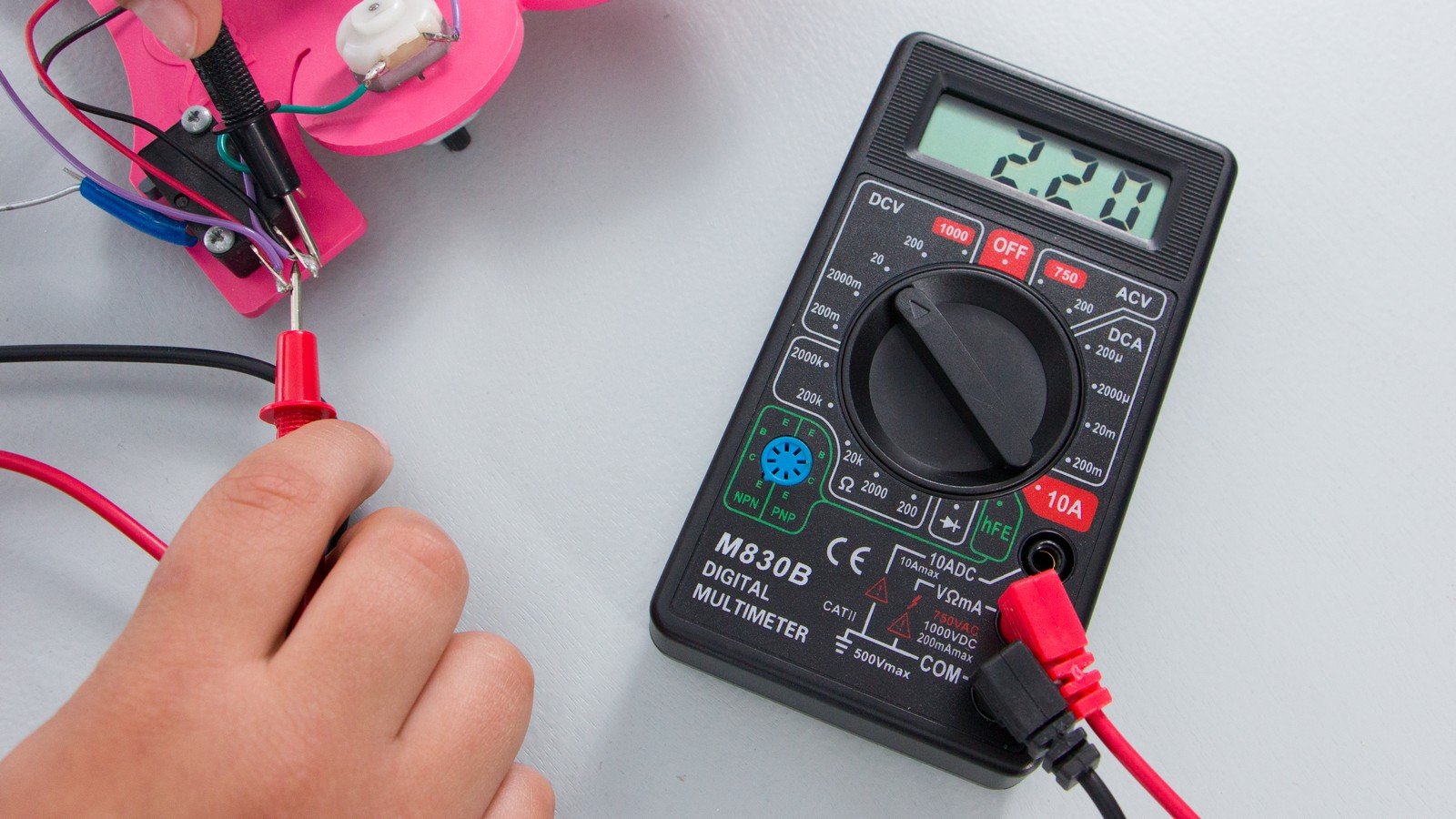
When measuring, it is important to observe the polarity, that is, connect the red probe to the plus of the battery, and the black to minus. When polarity reversal, devices equipped with a digital display will inform about the polarity violation by a minus sign in front of the number.
On switchgear, such a connection will cause the arrow to move in the opposite direction, which will completely prevent the correct voltage measurements from being obtained. Although in general there is nothing to worry about.
Amperage
In order to measure the current strength of a low-power battery, it is enough to put the device into the measurement mode of this parameter (A). By touching the probes of the device to the battery terminals, you can get the exact value in milliamperes.
When conducting measurements on a battery with a higher power, the device is moved to the “10A” position, and the positive output of the multimeter is rearranged to the neighboring cell.
If it is necessary to measure the current strength on a car battery, then these two methods are not suitable, because the discharge current strength of such batteries can reach several hundred amperes. Such measurements can only be carried out using a special tester, for example, Bosch BAT-131.
Capacity
Using a multimeter, you can calculate approximately the actual battery capacity. In addition to the tester, you will need to assemble or purchase a voltage stabilizer, which must correspond to the nominal voltage of the battery.
Then you should choose a load that can be powered by the battery for a sufficiently long period of time. To calculate the capacity, you should also prepare a stopwatch.
The measurement process is carried out in the following sequence:
- The multimeter is switched to the current measurement mode (10 A).
- The measuring device is connected in series to a circuit consisting of a current source, voltage stabilizer and load.
- The stopwatch starts.
After turning on the circuit, you should fix the values of the multimeter, and use the stopwatch to determine the amount of time it takes to completely discharge the battery. After multiplying the current by the time, you can get the actual battery capacity, measured in amperes / hours.
The use of this method for measuring the capacity of many acid batteries is not recommended, due to the negative impact of a full battery discharge on its performance.
Example! If we know in advance that the device connected to the battery consumes 10 a / h, then depending on how many hours it will work, this will be the battery capacity. If in our case the device works for 10 hours, then the battery capacity will be 100 Amps.
Internal resistance
Using a multimeter, you can easily measure the internal resistance of a current source. To perform this operation, you must:
- Measure the voltage at the battery terminals.
- Connect the load and measure the voltage drop and current in the circuit.
- Compute using the formula R = U / I, where R is the internal resistance, U is the voltage difference across the battery terminals before the load is turned on and after, I is the current in the circuit.
This method is suitable for measuring almost any type of rechargeable batteries and batteries.

Leakage current
Measuring the leakage current is very simple. To determine this parameter, it is necessary to put the multimeter into the mode of measuring current strength, connect the negative terminal of the battery to the device, and connect the positive output of the battery to the connected cable through the tester.
The leakage current will be displayed on the digital display. When measuring the leakage current on a car, the multimeter should be switched to resistance measurement mode (10 A), and all consumers of electricity should be turned off.
Overcharge
To determine the overcharge, the multimeter should be switched to voltage measurement mode. After determining the voltage, you should compare the indicators of the nominal value of the battery with the result of the measurement. If the latter will be more than 20% higher than normal, then this will indicate that the battery is recharged.
Overcharging the battery is quite dangerous. Acid batteries, in this case, begin to boil with the formation of explosive gas. Lithium-ion batteries can catch fire or explode if charged above normal.
Degree of charge
For many types of batteries, the degree of charge is checked by voltage. As in the previous case, you need to know the battery voltage at one hundred percent charge. A fully charged lead battery must have a voltage of 12.7 volts at the terminals.
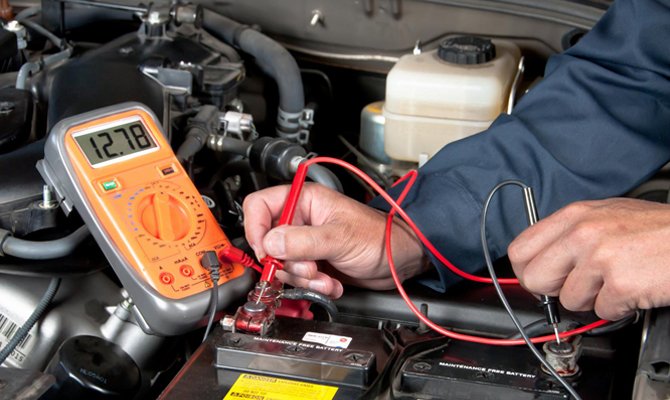
A fully discharged battery will correspond to a value of 10.5 V.It is easy to determine in this way the degree of battery charge if the voltage indicators deviate from these values.
Similarly, knowing the nominal voltage values, it is possible to measure the voltage with a multimeter to approximately determine the state of charge of a finger battery or battery for a mobile phone or laptop computer.
| Battery Voltage | Electrolyte density | Battery charge, % |
|---|---|---|
| 10.5 | 1.06 | 0 |
| 11.3 | 1.07 | 10 |
| 11.5 | 1.10 | 20 |
| 11.7 | 1.12 | 30 |
| 11.9 | 1.15 | 40 |
| 12.0 | 1.17 | 50 |
| 12.2 | 1.20 | 60 |
| 12.3 | 1.22 | 70 |
| 12.4 | 1.24 | 80 |
| 12.5 | 1.26 | 90 |
| 12.7 | 1.27 | 100 |
Conclusion
Using a multimeter, you can periodically determine the health of the battery as described above. Before taking measurements, make sure that the device is switched to the appropriate measurement mode.
Violation of this requirement may result in failure of the measuring device. The multimeter is especially likely to “burn” if the battery amperage is large enough.
There are questions, could not solve the problem, or is there anything to supplement the article with? Then write to us about it in the comments. This will help make the material more complete and useful!

